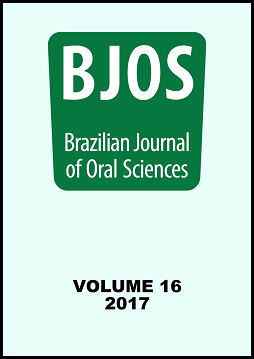Abstract
Aims: The objective of the present study was to assess the skeletal maturation by means of three-dimensional models of the cervical vertebrae generated through segmentation of the magnetic resonance (MR) images by using medical software. Methods: Twenty MR images of the skull of male and female individuals aged between 8 and 22 years old were selected. Assessment of the images was performed by using the ITK-SNAP software, consisting of three steps: 1) vertebral segmentation; 2) three-dimensional reconstruction; and 3) classification of skeletal maturation. Two specialists in orthodontics and two specialists in dentomaxillofacial radiology assessed the images. Results: Analysis of reproducibility and repeatability were performed by using the RR method, with paired t-test also being applied to the repeatability factor together with Lin’s concordance coefficient. The significance level was set at 5%. It was found that there was no difference in the inter-rater reliability (P-value = 0.625), but without statistical repeatability. Conclusions: New tools, as 3D reconstruction software, enabled us to build an effective and friendly 3D-reconstruction system for classification of the skeletal maturation stages of cervical vertebrae.The Brazilian Journal of Oral Sciences uses the Creative Commons license (CC), thus preserving the integrity of the articles in an open access environment.
Downloads
Download data is not yet available.

